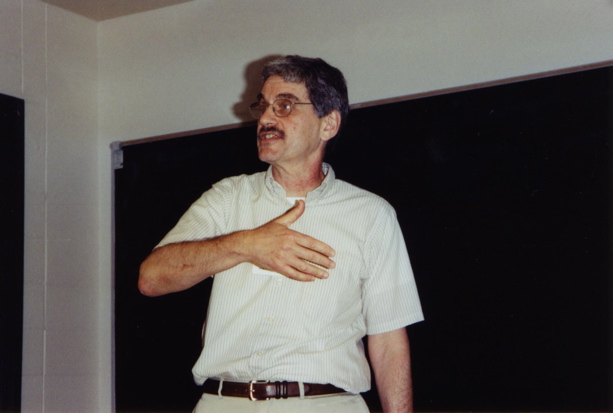The Wire published a story about the ‘atoms of Acharya Kanad‘ (background here; tl;dr: Folks at a university in Gujarat claimed an ancient Indian sage had put forth the theory of atoms centuries before John Dalton showed up). The story in question was by a professor of philosophy at IISER, Mohali, and he makes a solid case (not unfamiliar to many of us) as to why Kanad, the sage, didn’t talk about atoms specifically because he was making a speculative statement under the Vaisheshika school of Hindu philosophy that he founded. What got me thinking were the last few lines of his piece, where he insists that empiricism is the foundation of modern science, and that something that doesn’t cater to it can’t be scientific. And you probably know what I’m going to say next. “String theory”, right?
No. Well, maybe. While string theory has become something of a fashionable example of non-empirical science, it isn’t the only example. It’s in fact a subset of a larger group of systems that don’t rely on empirical evidence to progress. These systems are called formal systems, or formal sciences, and they include logic, mathematics, information theory and linguistics. (String theory’s reliance on advanced mathematics makes it more formal than natural – as in the natural sciences.) And the dichotomous characterisation of formal and natural sciences (the latter including the social sciences) is superseded by a larger, more authoritative dichotomy*: between rationalism and empiricism. Rationalism prefers knowledge that has been deduced through logic and reasoning; empiricism prioritises knowledge that has been experienced. As a result, it shouldn’t be a surprise at all that debates about which side is right (insofar as it’s possible to be absolutely right – which I don’t think everwill happen) play out in the realm of science. And squarely within the realm of science, I’d like to use a recent example to provide some perspective.
Last week, scientists discovered that time crystals exist. I wrote a longish piece here tracing the origins and evolution of this exotic form of matter, and what it is that scientists have really discovered. Again, a tl;dr version: in 2012, Frank Wilczek and Alfred Shapere posited that a certain arrangement of atoms (a so-called ‘time crystal’) in their ground state could be in motion. This could sound pithy to you if you were unfamiliar with what ground state meant: absolute zero, the thermodynamic condition wherein an object has no energy whatsoever to do anything else but simply exist. So how could such a thing be in motion? The interesting thing here is that though Shapere-Wilczek’s original paper did not identify a natural scenario in which this could be made to happen, they were able to prove that it could happen formally. That is, they found that the mathematics of the physics underlying the phenomenon did not disallow the existence of time crystals (as they’d posited it).
It’s pertinent that Shapere and Wilczek turned out to be wrong. By late 2013, rigorous proofs had showed up in the scientific literature demonstrating that ground-state, or equilibrium, time crystals could not exist – but that non-equilibrium time crystals with their own unique properties could. The discovery made last week was of the latter kind. Shapere and Wilczek have both acknowledged that their math was wrong. But what I’m pointing at here is the conviction behind the claim that forms of matter called time crystals could exist, motivated by the fact that mathematics did not prohibit it. Yes, Shapere and Wilczek did have to modify their theory based on empirical evidence (indirectly, as it contributed to the rise of the first counter-arguments), but it’s undeniable that the original idea was born, and persisted with, simply through a process of discovery that did not involve sense-experience.
In the same vein, much of the disappointment experienced by many particle physicists today is because of a grating mismatch between formalism – in the form of theories of physics that predict as-yet undiscovered particles – and empiricism – the inability of the LHC to find these particles despite looking repeatedly and hard in the areas where the math says they should be. The physicists wouldn’t be disappointed if they thought empiricism was the be-all of modern science; they’d in fact have been rebuffed much earlier. For another example, this also applies to the idea of naturalness, an aesthetically (and more formally) enshrined idea that the forces of nature should have certain values, whereas in reality they don’t. As a result, physicists think something about their reality is broken instead of thinking something about their way of reasoning is broken. And so they’re sitting at an impasse, as if at the threshold of a higher-dimensional universe they may never be allowed to enter.
I think this is important in the study of the philosophy of science because if we’re able to keep in mind that humans are emotional and that our emotions have significant real-world consequences, we’d not only be better at understanding where knowledge comes from. We’d also become more sensitive to the various sources of knowledge (whether scientific, social, cultural or religious) and their unique domains of applicability, even if we’re pretty picky, and often silly, at the moment about how each of them ought to be treated (Related/recommended: Hilary Putnam’s way of thinking).
*I don’t like dichotomies. They’re too cut-and-dried a conceptualisation.


